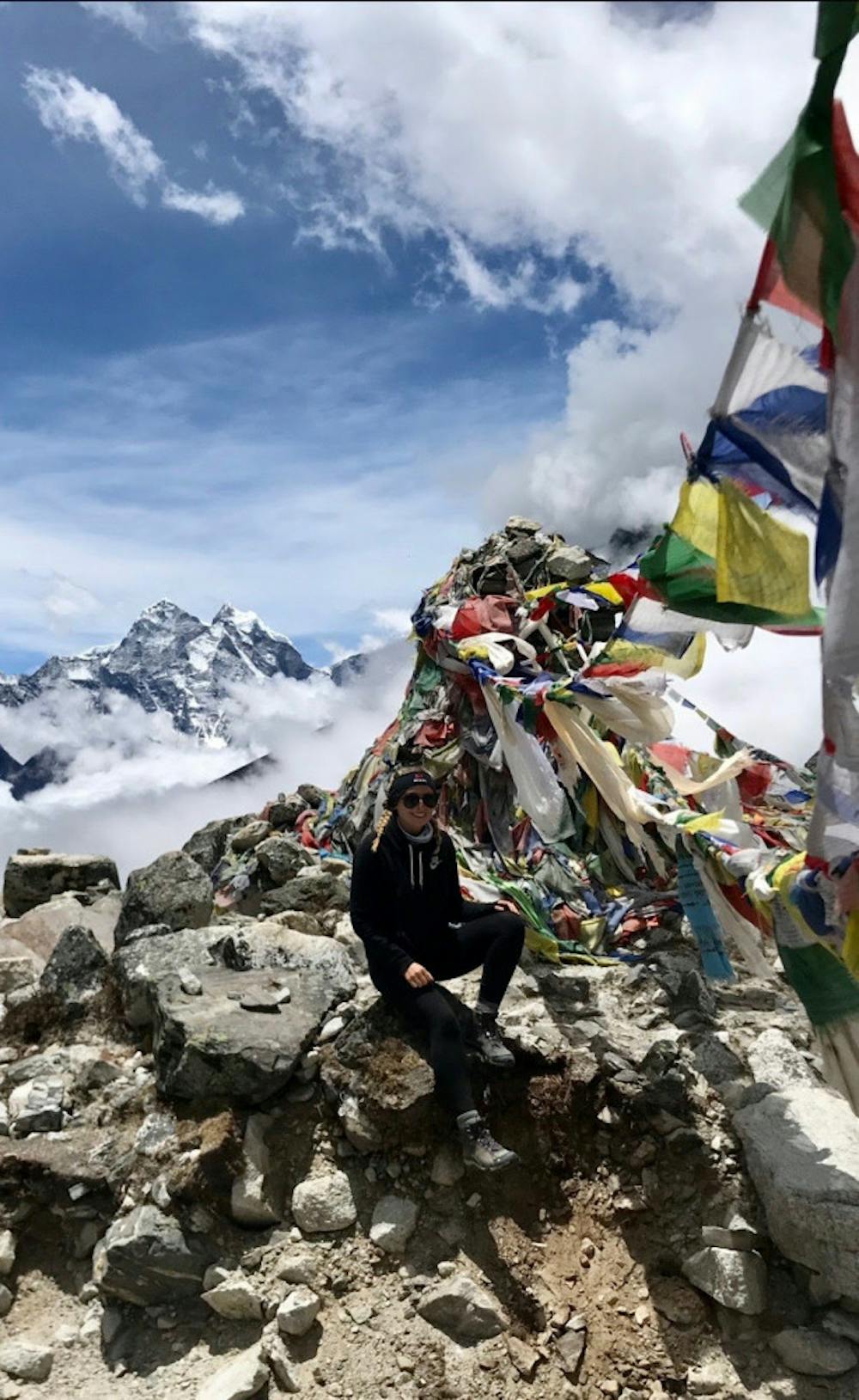By: Jenn Soos
My 2019 trek to Everest Base Camp was very eye-opening to the startlingly real environmental problems that the Himalayan region faces. I reached base camp in Nepal in the beginning of June of last year. The trek took a total of eight days to reach base camp from Lukla, Nepal, and three days to return. Since I hiked on the Nepali side, I was in the Khumbu region, which is home to three of the top ten tallest mountains in the world: Mt. Everest at number one, Lhtose at number four, and Annapurna which ranks at number ten.
My trek started by landing at the Tenzing-Hilary Airport in Lukla. It’s also known as the most dangerous airport in the world due to a few factors: its location at 9,334 feet between mountains, the quick-changing weather patterns, and, most notably, the 11.7 percent grade that the runway sits on. There’s a cliff on one end and rock on the other, so the pilots really have to land correctly. The trek started from there, and on the second day we ended in a village called Namche Bazaar that appeared out of nowhere.
The village was full of people and shockingly not very cold at all climate-wise. We stayed here for two nights, as the second day there was an acclimatization day. This meant we would hike up about 2,000 feet, stay there for 30 minutes and then return to Namche Bazaar for the night in order to get our bodies more accustomed to the high elevations and thinner air. We did this twice, which is why it took so much longer to reach base camp than it did to return from base camp.
Along the way, we trekked through other small villages, past donkeys, yaks and people of all ages who were carrying large amounts of goods to sell or trekkers' luggage. The only way that these villages are able to get supplies is by bringing them up themselves without transportation. We stopped at the Tengboche Monastery, which sits between rolling hills and snow-capped mountains, with rivers flowing all around it: it is quite a sight to see!
When it comes to protecting these beautiful areas, however, the Nepali government has not taken a proactive approach to decrease the large quantities of trash generated by trekkers. Whether these people littered on purpose or by accident, I noticed that there was an abundance of trash throughout the entire region. Only recently has the government required trekkers to return with more trash than they consumed while on the mountain. Trash accumulation is seen throughout the villages as well as along the paths.
Enjoy what you're reading?
Signup for our newsletter
Another main contributor to this problem is actually the death rate of those attempting the climb. Due to people perishing on the mountain, their items also perish with them and break down very slowly. Tents, coats and leftover food wrappers are blown everywhere throughout the region. In fact, there are expeditions beginning to ascend where the main goal is to clean up the Himalayas, where participants on the journey will pick up trash and recover bodies or items for loved ones that are found along the way.
During my trip, we also saw the memorial site Chuka Lare, which is home to memorials of Sherpas and climbers who have passed while attempting to summit. The area is filled with Tibetan prayer flags and memorials for people like Scott Fischer and Rob Hall, the trekkers who inspired the film "Everest". The memorial site itself was encapsulated by these rock walls which were covered and draped in prayer flags. Throughout the area there were memorials like this with the name of the honored person and other things that trekkers or family members have left behind. There, you can also find memorials for Tenzing Norgay and Sir Edmund Hilary, the first two people to ever summit Mt. Everest.
An important community throughout Nepal, specifically throughout the Himalayan region at the bases of mountain ranges, are the Sherpa communities. Sherpas coined their name because the first native people to guide and carry supplies or luggage up the mountains was the Sherpa family. Today, it is still a last name for almost everyone that holds the same job and for those who do not climb as a living. Sherpas will walk up the mountain in flip flops without the need for any breaks or acclimatization because they have grown accustomed to high altitudes. Most Sherpas would play tricks on each other or joke around while trekking. The path was always filled with laughter. They can fix almost any problem you may have, physically or emotionally, and are just overall happy and amazing human beings.
There are surprisingly many types of accommodations one could stay in along the trek. Most trekkers will choose to stay in “Tea Houses” or little hotels without heat or air conditioning— but they can cook you a hot meal and will heat up the dining room at night. They give you blankets, but we were instructed to bring heavy sleeping bags, and we definitely needed them! The Tea Houses provide an income and a source of livelihood for the generations of Nepali families that have run these establishments. This leads to an overall sense of stability and sustainability within their local economies.
When we finally reached base camp, we were informed that we were very lucky it was so clear out. Usually you cannot see the top of Everest by the time you reach base camp because it is covered in clouds or snow. It was so bright and sunny that day that I even had to take my coat off the longer we stayed at base camp! We were able to see the top of Everest for awhile until the clouds inevitably rolled in, but we were still able to see other parts of the tallest mountain in the world.
My trek was nothing short of amazing. I would do anything to go back in time and do it all over again. I met so many kind-hearted people along the way and gained a learning experience that taught me all about the local culture and history of Nepal. The trek did not require much training at all, and it changed my life forever: I absolutely recommend this experience to everyone.
All photos courtesy of Jenn Soos




